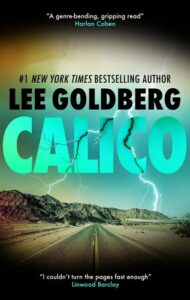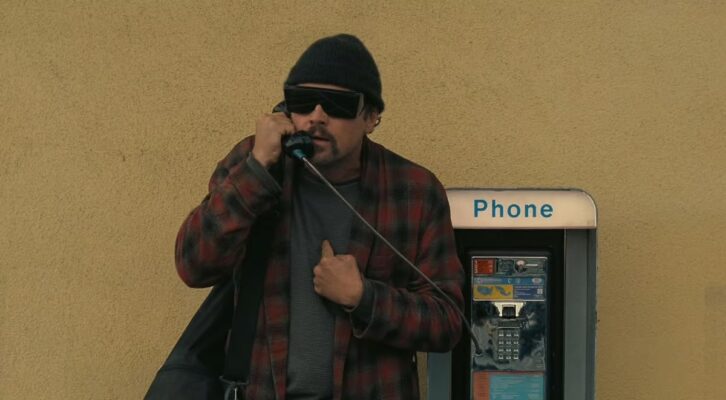I’ve always loved crime novels and westerns. I’ve written dozens of crime novels, but not any westerns.
Or so I thought.
A few years ago, at a book signing event for one of my “Eve Ronin” series of police procedurals, a reader told me I was her favorite western author, which I thought was a strange thing to say, since I’ve never written one.
Well, that’s not entirely true. I’ve dabbled with a couple of western homages…. my original 2010 TV tie-in Mr. Monk in Trouble included flashbacks to Adrian Monk’s obsessive-compulsive ancestor who lived during the California Gold Rush. And my 2012 crime novel King City was crafted as a contemporary, urban riff on the legendary TV series Gunsmoke.
But those were one-offs.
I write mostly about detectives of one sort or another, solving crimes in Los Angeles, not out in the country…and not on horseback. There isn’t a cactus or cow in sight.
How could I possibly be considered a “western” author?
Because, she argued, it’s the themes and the characters that make my books westerns. She pointed out that my protagonists are usually a relentless individual, driven by an unwavering personal code, who is determined to bring justice, or at least some order, to a land torn apart by chaos, corruption, and lawlessness.
Just like most westerns.
She had a point…and I couldn’t let it go. I thought about the nearly 40 novels I’d written. For instance, one of the two arson cops in my thriller Malibu Burning wears a Stetson. And in Dream Town, coming out in January, Los Angeles County Sheriff’s detective Eve Ronin investigates the murder of a reality show star, who was the daughter of a famous western actor… and who lived in gated, equestrian community that has its own, self-styled Marshal…who rides a horse and wears a cowboy hat.
Geez. The western influences aren’t exactly subtle, are they?
Except, apparently, to me.
I had to face the truth. I’ve been closeted western writer all along, passing myself off as a crime and thriller writer.
It’s nothing to be ashamed of – Elmore Leonard did the same thing, his “Raylan Givens” novels being the prime example. Except, unlike me, he actually wrote a bunch of traditional westerns, including the classics The Tall T, 3:10 to Yuma, Hombre and Joe Kidd (He also wrote the Lee Majors TV movie High Noon II: The Return of Will Kane, but the less said about that, the better).
It was time to come out of the closet as a western writer.
I decided to do it by writing a gritty western set in 1883 in the Mojave desert mining town of Calico, which is now a cheesy roadside attraction off the I-15 between Los Angeles and Las Vegas. It’s actually a notion I’ve had in the back of my mind for years…maybe even decades.
But there have been a thousand westerns. What could I bring to the genre that nobody else had? How could I make it my own?
The answer was obvious: I’d use the novel to reconcile my creative, split personality. And I’d do that by combining a seemingly traditional western with a present-day crime novel… a seemingly straight-forward police procedural set in the Mojave in 2019.
Notice the repetition of the word seemingly in the previous paragraph.
That’s because, to truly make it mine, I’d have to acknowledge the tropes of both genres…and then ruthlessly subvert them. That’s my brand, or so I am told, exemplified by my “Ian Ludlow” trilogy of spy novels (True Fiction, Killer Thriller, and Fake Truth)
What would connect the two storylines?
The answer was easy.
They would share the same corpse.
And they would also share a mystery that spans past and present…one that would require me to honor, and break, the cliches of yet another genre.
That’s right, a third one.
But talking about that would be a spoiler. So forget I mentioned it.
***
Okay, I have to stop here… and admit there was also a business motivation behind my decision to mash-up two completely different genres…and it had nothing to do with my creative interests.
It had to do with my interest in making money.
I’m a #1 New York Times bestselling author (I love saying that, and I use will use any excuse to do it) of novels about cops, spies, conmen, FBI agents, private eyes, and thieves.
What publishers want from me and, more importantly, what they believe readers want from me, are crime novels and thrillers.
What publishers don’t want me from me is a gothic romance, a children’s book, or an interstellar adventure …and especially not a western, a literary genre in hospice-care that is relegated to less than half-a-shelf at Barnes & Noble and that mostly appeals to AARP members.
So, if I wanted to write a traditional western, I’d have to find a way to make it fit into the genres I’ve been successfully writing in, the contemporary ones that pay my mortgage and keep me in Diet Coke, Keto Bars, and boxed DVD sets of old TV shows.
And to pull that trick off, I’d have to make the story work as one cohesive, genre-bending, race-against-time adventure, not two different books that happen to share the same binding…
My God, what was I getting myself into?
Well, as it turned out, the perfect way to endure being locked in my house during the pandemic.
***
I spent those months of self-imposed quarantine writing Calico. It transported me to another time and place, but one I could mostly research from home… and later, when the pandemic threat eased up a bit, by driving out to the Mojave, a bleak desert hell-scape where even Covid-19 is afraid to roam. The extensive research wasn’t the hard part. It was realizing this:
The key to writing a genre mash-up is not to write one.
The trick to accomplishing that contradiction is to create a narrative and emotional through-line that is so compelling that the readers are unaware of the genres at play, they are too invested in the characters and the story to ask themselves “What am I reading?”
That means maintaining a consistent pace and tone, even if the voice, POVs, time periods and the genre tropes you have to service (and then gleefully break) keep shifting. The book has to be a single song, not a medley.
I’m certainly not the first writer to tackle this insane challenge – in recent years, Jonathan Evison pulled it off brilliantly in Small World and so did Anthony Doerr in Cloud Cuckoo Land. But it’s not easy…and if the hard, excruciating work ever shows, then you’ve failed.
That’s because the crucial element of overcoming all the challenges and obstacles in writing a genre mash-up is to make it look effortless…as if this was the natural way the story had to be told.
As difficult as it was, I’m glad that I wrote Calico.
It made me realize that I am a western writer and probably so is everybody else who writes crime novels, they just don’t realize it….yet.
___________________________________


















